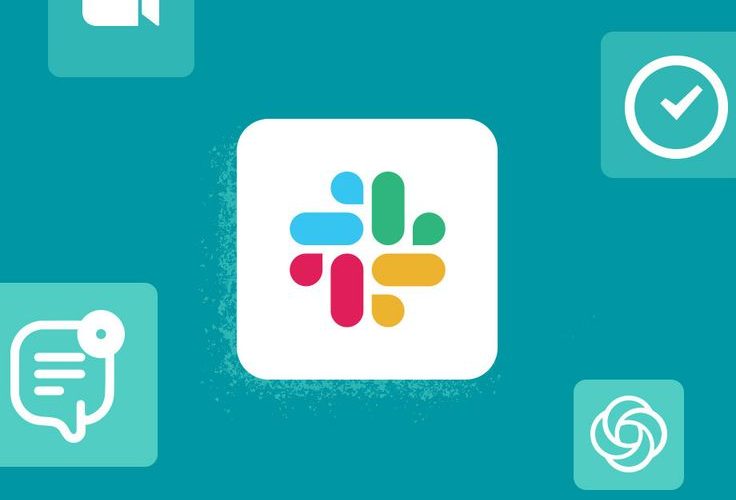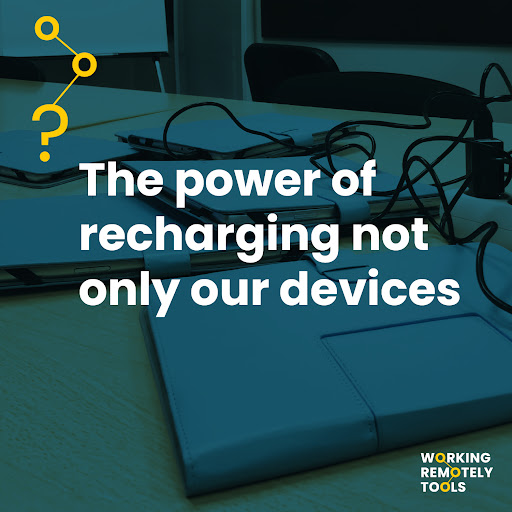Articles
Introduction
AI tools for Social Media marketing has proved to be very effective and successful in:
- Making the SM marketing process more efficient with more productivity and less time needed
- SM management by helping to schedule posts and posting on the best schedule time. SM management tools available in the AI marketing tool, SocialBee can be used for such a task.
- Creating higher quality content by inspiring the business with new, original ideas therefore widening your scope to be more creative and unique in your approach to creating better content. To create catching, original graphics content creators can use the AI graphics tool, Canva.
> Canva for Social Media graphics:
With Canva you can create original and wonderful designs on daily basis. The top de

sign AI tool on the web has a rich section for posting on Social Media.
Whether it’s Instagram, Facebook or LinkedIn there are appealing templates ready.
Canva is a free user friendly if you want to create your own design simply by using drag and drop feature.
> SocialBee for Social media marketing and management:

- Social Bee can be used to:
> Create posts using social media prompts and summarize blogs
> Craft high converting content in your prefered tone of voice
> Generate and apply a SM marketing strategy through evaluating SM accounts effectiveness by analyzing key metrics (Social Media Analytics), engaging with clients through direct friendly messaging, reading & replying to comments.
- Clients can delegate all the digital marketing process to SocialBee experts who will:
> Produce high-quality content on weekly basis (text & graphics)
> Produce Video Posts
> Produce long-form Content
> execute SM lead generation and social community engagement
> Create paid ads
Conclusion
With the majority of companies competing online through their presence on an increasing number of social media platforms, effective SM marketing and management is essential to stay on the lead. Companies can decide to execute their SM marketing process themselves or hire a Digital Marketing company under a contractual agreement.
Many AI tools are present online for SM Marketing and SM Management. All rated, with different prices according to the specific accounts chosen (e.g. Standard or Premium) while some are free and paid for, if open, for more features on a premium account. It’s advised to make a comparison of the many tools available online and choose the best and the most relative. You should look for the ratings, features of the tools and testimonials about the tools. Do such features match your needs or not? or whether it’s better to delegate the SM marketing tasks to a digital marketing agency.
Your presence on SM is critical today and could be the reason for the success or failure of your company. Posting influential posts with the right content, the best tone of voice and time is a must. Are your posts helpful, inspiring and attractive for your client to react to whether to buy or not? Moreover, engaging in a friendly effective way with your client and providing quality customer support will all count on your success of your Social Media marketing campaign or its failure. It depends if you can create traffic, customer conversions and loyality with your content. AI tools like Socialbee and Canva are available for the digital marketing campaign and can help you succeed in marketing your product or service online by attaining the mentioned goals.
Remote Work Benefits: Exploring the Advantages for Employers and Employees

The way we work is evolving, and it’s affecting both employers and employees. Remote work is at the forefront of this transformation, offering new opportunities and advantages.
In this blog, we’ll explore how remote work impacts the professional landscape, creating a shift that benefits not only organizations but also the individuals who make them thrive. Let’s dive into this exploration and discover how remote work is changing the game for employers and employees alike.
I. Cost Savings

Cost savings are one of the most evident and impactful “remote work advantages” for both employers and employees.
For Employers:
Employers can experience significant financial relief by embracing remote work. This relief comes from various sources, such as:
- Reduced Office Space Costs: Physical office spaces can be a substantial financial burden. By allowing employees to work remotely, employers can downsize office spaces or eliminate them altogether. This not only saves on rent but also reduces utility and maintenance expenses.
- Sustainability and Cost Alignment: Remote work aligns with sustainability goals. Fewer physical offices mean reduced energy consumption and a smaller carbon footprint. This not only benefits the environment but also translates to lower utility bills and a positive corporate image.
For Employees:
- Commuting Expenses: Employees who work remotely save on daily commuting costs. This includes expenses like fuel, public transportation fees, and parking fees. Furthermore, remote work eliminates wear and tear on vehicles, leading to long-term savings.
- Attire Flexibility: Remote workers often enjoy more flexibility in their choice of work attire. With no need for professional clothing, employees can reduce clothing expenses and the time spent on wardrobe upkeep.
II. Increased Productivity

For Employers:
Employers benefit significantly from the enhanced productivity of remote work, which can be attributed to the following factors:
- Reduced Workplace Distractions: Traditional office settings often come with various workplace distractions and interruptions that can hinder productivity. In a remote work environment, employees are typically more focused and experience fewer disturbances, leading to increased efficiency.
- Time Savings: Employees no longer need to commute to the office, which saves valuable time. This can result in more working hours, as employees can start their tasks promptly.
For Employees:
Remote workers also benefit from increased productivity due to various factors:
- Flexible Workspaces: Remote employees can customize their workspace to suit their preferences. This includes ergonomic furniture, comfortable chairs, and well-lit areas. These elements optimize physical comfort and support a more productive workday.
- Efficient Time Management: With more control over their work environment and schedule, employees can manage their time more efficiently. They can structure their workday to align with their peak productivity hours, resulting in increased output in less time.
III. Talent Pool Expansion

One of the outstanding “remote work advantages” for employers is the significant expansion of their talent pool. This expansion occurs due to the ability to access a global workforce, allowing employers to select the best candidates for their roles, irrespective of geographical location.
How?
- Access to Specialized Skills: With remote work, companies can tap into a diverse pool of talent and access specialized skill sets that might not be available locally. This access to a broader range of expertise can be particularly beneficial for roles that require niche skills or expertise.
- Allows employers to create diverse teams comprising members from various cultural backgrounds and experiences.
- Diversity in the workforce can lead to more creative problem-solving, better decision-making, and enhanced adaptability, all of which contribute to an organization’s success
- Competitive Edge: Employers can assemble teams with a rich tapestry of skills and experiences, fostering innovation and problem-solving capabilities that are vital for staying competitive in the modern business landscape.
IV. Employee Satisfaction

Remote work is associated with higher levels of “employee satisfaction.”
And why is that? Because:
- Employees appreciate the flexibility and autonomy remote work provides. It aligns with the desire for a healthier work-life balance.
- Reduces daily commute-related stress and allows for more family time.
- When employees are content, it leads to increased morale, reduced turnover rates, and better overall organizational performance. This, in turn, benefits employers who enjoy a more motivated, dedicated, and satisfied workforce.
V. Environmental Impact:

One of the less discussed but highly important “remote work advantages” is its positive impact on the environment.
How it can affect the environment?
- When employees work remotely, they significantly reduce their carbon footprint associated with daily commuting.
- Fewer cars on the road translate to less traffic congestion and lower carbon emissions, contributing to a cleaner environment.
- For employers, reduced office space and utility usage lead to energy savings and a smaller ecological footprint.
- Promoting remote work can align with corporate sustainability goals, enhance the company’s reputation as an environmentally conscious organization, and support broader environmental initiatives.
FAQ
Remote work offers significant cost savings for both employers and employees. Employers can reduce expenses related to office space, utilities, and maintenance, while employees save on commuting costs, including fuel, public transportation fees, and professional clothing.
Remote work often leads to increased productivity because employees experience fewer workplace distractions and interruptions. They can create a personalized work environment, resulting in more efficient work and task completion in less time.
While remote work is more feasible for some jobs, advances in technology have made it possible in various industries. Employers and employees can explore flexible work arrangements that suit their specific needs.
Employers and employees require various tools and technologies, such as video conferencing platforms, project management software, and secure file-sharing solutions, to facilitate remote work effectively.
Effective leadership is vital for setting expectations, maintaining motivation, and fostering a positive remote work culture that benefits both employers and employees.
Employers can offer training on remote work best practices, stress management, and technological tools to ensure employees have the support they need to thrive in remote work environments.
Remote work allows employers to build diverse teams with members from different cultural backgrounds, bringing fresh perspectives and innovative ideas.
Yes, remote work allows employers to access a global talent pool, enabling them to select the best candidates for specific roles, irrespective of geographical location.
Conclusion

As remote work becomes an increasingly integral part of the modern professional landscape, understanding and leveraging these advantages can lead to a more fulfilling and productive career. Remote work isn’t just a job; it’s a pathway to a better way of working and living. By embracing these benefits, employers and employees alike can create a win-win situation that transforms the traditional notions of work into a more flexible, dynamic, and satisfying experience.
So, whether you’re an employer looking to enhance your organization’s performance or an employee seeking a better work-life balance, remote work provides a compelling solution.
For more info, contact us.
Remote work has become increasingly popular in recent years, and it's here to stay. While it has its perks, like flexibility and the ability to work from anywhere, which can improve work-life balance and productivity, remote work also comes with its own set of challenges.

In this article, we will discuss some of the most common remote work challenges and offer strategies for overcoming them.
1. Staying focused and productive throughout the day.
If you’re a remote worker, you know what I’m talking about. But don’t worry, you’re not alone. Millions of remote workers face these challenges on a daily basis. And the good news is, there are strategies you can use to overcome them.

One of the biggest challenges of remote work is staying focused and productive when you’re surrounded by distractions at home. Here are a few tips that can help:
- Set up a dedicated workspace free from distractions.
- Create a schedule and stick to it as much as possible.
- Take breaks throughout the day to move around.
- Use time tracking tools to stay on track.
- Reward yourself for completing tasks (Because you deserve it!)
2. Communicating and collaborating effectively

Another challenge of remote work is communicating and collaborating effectively with colleagues. Here are a few tips:
- Use video conferencing and other tools to facilitate communication and collaboration.
- Be clear and concise in your communication.
- Be responsive to messages and requests.
- Overcommunicate, especially when working on complex projects.
- Make an effort to build relationships with colleagues, even if you’re not seeing them in person every day.
3. Maintaining work-life balance while working remotely

When you work remotely, it can be easy to let your work life and personal life blend together. Remote workers can be more at risk of burnout than traditional office workers. You can:
- Stick to regular work hours. That includes not checking work emails or messages outside of work hours.
- Take time for hobbies and social activities outside of work.
- Use technology to your advantage: There are several tools and apps available that can help you to stay organized and productive while working remotely.
- Set clear expectations with your manager and colleagues regarding your availability and work hours.
Further reads : Remote Work Lifestyle: Balancing Work and Personal Life for a Fulfilling Career
4. Feeling isolated.

Remote workers can sometimes feel isolated, especially if they don’t have many other remote workers in their social circle. Here are a few tips for overcoming isolation:
- Join online communities for remote workers.
- Attend industry events and conferences.
- Co-work at a local coffee shop or coworking space.
- Try to socialize with colleagues, even if it’s just through video chat.
5. Technical difficulties

Remote workers can sometimes experience technical difficulties, such as slow internet speeds or unreliable video conferencing software. Here are a few tips for overcoming technical difficulties:
- Have a backup plan in case of technical difficulties to switch to a different platform in case of an important meeting.
- Test your technology before you need it. This will help you identify and troubleshoot any potential problems.
- Keep your software and firmware up to date. This will help to prevent bugs and glitches.
- Use a VPN to secure your connection and protect your data.
6. Time zone differences in remote work.

Remote workers may need to collaborate with colleagues in different time zones. This can make it difficult to schedule meetings and communicate effectively. Here are a few tips for overcoming time zone differences:
- Be clear about your availability when scheduling meetings.
- Use asynchronous communication tools, such as email and Slack, to communicate with colleagues in different time zones.
- Use project management software to track progress and keep everyone on the same page.
- Be patient and understanding. It may take longer to communicate and collaborate with colleagues in different time zones.
Conclusion
Remote work can be a great way to improve your work-life balance and productivity. But it’s important to be aware of the challenges and have strategies in place to overcome them.
By following the tips above, you can create a successful and fulfilling remote work experience for yourself.
Additional tips for employers
Employers can also play a role in helping their remote employees succeed by creating a positive and supportive work environment
. Here are a few tips:
- Provide clear expectations and goals for remote workers.
- Provide remote workers with the tools and resources they need to be successful.
- Communicate regularly with remote workers and provide feedback.
- Create opportunities for remote workers to collaborate and build relationships with each other.
- Recognize and reward remote workers for their good work.
If you find any aspect of working remotely to be challenging, Socialprise is always available to provide additional support and guidance.
Remote Work Lifestyle: Balancing Work and Personal Life for a Fulfilling Career

In today’s professional landscape, remote work, where you can work from home or anywhere, has become super popular. It gives people the freedom to balance their jobs with their personal lives.
In this blog, we’re going to delve into why achieving “remote work-life balance” is pivotal in the context of remote work and explore the strategies that can help you attain it.
Let’s dive in and discover how you can make remote work not just a job, but a way to have a great career and enjoy life too.
I. Bear in Mind That Remote Work Presents Challenges

Balancing work and personal life in a remote work setting presents a unique set of challenges:
- Dealing with isolation. When you work remotely, you may miss the social interactions that come naturally in a traditional office. This isolation can sometimes lead to feelings of loneliness and disconnection.
- Remote work often blurs the lines between work and personal life. It can become challenging to establish clear boundaries, and the temptation to overwork or constantly check work-related messages is ever-present.
- Home environment may not always be as conducive to work as a professional office. Family members, pets, household chores, and other daily responsibilities can interfere with your focus and productivity. These distractions are sometimes difficult to manage, especially when they encroach on your work hours, affecting your ability to meet professional deadlines and personal commitments.
II. Create an Ideal Remote Work Environment

Creating an ideal remote work environment is crucial for overcoming the challenges mentioned above.
In fact, a well-designed home office can significantly enhance your productivity and overall well-being.
The key?
- Selecting a quiet, dedicated area where you can focus on your work.
- Considering factors like lighting, ergonomic furniture, and a comfortable chair. These elements support your physical health during long work hours.
- Personalization. It is another important aspect of creating an inspiring remote work environment: Adding plants, artwork, or motivational quotes can infuse positivity and motivation into your workspace.
- Keeping your workspace organized and clutter-free. A tidy workspace promotes a clear and focused mindset, preventing distractions that can disrupt your work.
III. Set Boundaries for Work Hours and Personal Time

In the realm of remote work, establishing clear boundaries for work hours and personal time is of paramount importance.
Unlike traditional office settings, remote work offers the flexibility to define one’s schedule, but this freedom can lead to work encroaching on personal life.
To combat these challenges, it’s imperative to proactively set boundaries for your work hours and personal time.
This involves:
- Defining a clear structure for your workday, specifying when you’ll be working and when you won’t. BUT, it’s not just about you—communication is key. It’s about effectively conveying these boundaries to your colleagues and clients, so they understand when you’re available and when you’re not.
- Communicating these boundaries with your family and those you share your living space with. In fact, just because you’re working from home doesn’t mean you’re available for non-work-related matters at any time.
This dialogue ensures that your family members respect your work hours, allowing you to concentrate on your professional tasks without interruptions.
This will ensure a balance between professional and personal life, safeguarding well-being, boosting productivity, and allowing for the full enjoyment of personal life without the constant intrusion of work.
IV. Apply Time Management Strategies

Effective time management is a cornerstone of maintaining work-life balance in a remote work setting.
- Set clear goals and prioritize is the foundation of time management.
By establishing your objectives, you can focus on tasks that align with your overarching goals, ensuring that you’re not wasting time on less important activities. - Break down larger projects into smaller, manageable steps.
This approach helps you avoid feeling overwhelmed and allows you to make steady progress. - Create a schedule or to-do list.
It is a practical way to keep track of your daily and weekly goals. - Time blocking.
It is an effective technique for managing your workday. It involves allocating specific time slots for different activities, allowing you to concentrate on one task at a time and avoid multitasking, which can be counterproductive. - Leverage productivity tools and apps.
This would also streamline your time management efforts. These tools can help you stay organized, set reminders, and prioritize tasks more efficiently.
Discover the tools!
FAQ
Yes, remote work offers the potential for a fulfilling career and work-life balance, provided you implement effective strategies for time management, self-care, and creating an ideal work environment.
Setting boundaries involves communicating your working hours to colleagues and family, disconnecting from work-related devices during personal time, and establishing a routine that allows for breaks and self-care.
Remote work has the potential to improve work-life balance when you establish clear boundaries, but it can blur lines if you don’t set limits.
Communicate your needs by having an open conversation, setting clear expectations, and providing regular updates on your work progress and availability.
Technology aids in remote work by providing productivity tools, communication platforms, and resources for creating a productive work environment.
The Pomodoro Technique involves working in focused 25-minute intervals followed by short breaks. It enhances productivity by preventing burnout and promoting concentration.
Conclusion

Achieving a fulfilling career while balancing work and personal life in a remote work lifestyle is an attainable goal with the right strategies and mindset. As we’ve explored, remote work presents unique challenges, from isolation to blurred boundaries, but with dedication and proactive measures, you can navigate these difficulties.
Remember, success in remote work is not just about achieving professional milestones but also about finding contentment and balance in your life as a whole. So, embrace the opportunities that remote work provides, take care of yourself, and savor the journey of creating a remote work lifestyle that brings you both professional success and personal fulfillment.
For more info, contact us.
Introduction
Some recent studies have shown that employees feel more productive when working remotely. The matter is about achieving a life-work balance which leads to higher job satisfaction and more employees staying longer in the organization.
Working remotely can have positive impact on the mental health of all staff as well as creating some challenges. It’s the responsibility of the leader to set the proper policies that guarantee effective communication while working remotely between all staff, to choose the right tools to achieve such synergy in the organization through delegation of tasks and motivation of employees.
Positive impact of working remotely
Working remotely serves employees who experience anxiety, rising from the traditional setting of the office. The employees working on-site should conform to the organizational culture and moreover, can be distracted at work by his/her colleagues’ small talk every now and then. Therefore, working remotely serves the employee, especially employees with an introverted personality, by not getting overwhelmed to conform to the organizational culture & body language expectations. It can help them to focus better and achieve more with less time needed.
In working remotely, virtual meetings have a positive impact on an introverted employee’s mental health as it removes barriers such as body language and posture. In addition, it helps the employee to express his/her view through discussions online without feeling to conform to social norms. This environment is more inclusive and accessible, benefiting both individuals and organizations alike. Working remotely allows a wider scope of communication with a diverse group of adepts in different fields all around the globe that helps the organization to increase productivity and enhance product or service quality, by being more innovative and efficient at work.
Challenges of working remotely
However, there are some challenges that the employee and the organization face when working remotely. Loneliness can occur as some employees depend on others to feel motivated and productive. Some find it hard to draw a vivid line between personal life and work and therefore end-up in feeling they are working all the time. Juggling between life and work may seem for them not being present giving their best in both. They become demotivated therefore, and can negatively influence their productivity’s quality and quantity, less output and a less satisfied customer leading to less sales and profit for the organization.
Conclusion and Tips
When it comes to employees working remotely, a culture should be created in the organization that supports their mental well-being. Communication between the employer and employee can be effective with respect from both sides and appreciation when quality work is executed. In Addition, positive feed-back on good work and effort that motivates the employee and therefore enhance productivity. A satisfied employee working remotely will give his/her best at work and therefore have an immense effect on the Organization’s brand and reputation in the market which helps the business to thrive.
Some tips on establishing an effective culture that leads to success of an organization working remotely:
Tip 1: Setting the right policies
Setting policies by the employer like expectations for working hours, availability, Communication protocols, performance metrics clarifies all aspects of the employee’s job, helps him/her settle down as boundaries can be better set between personal life and working hours. This allows a feeling of satisfaction and stability in terms of the employee and better overall productivity.
Today many organizations, especially startups, are working remotely. This saves them money as no office space is required. It allows many employees to experience flexibility and mental well-being at work thus becoming more productive and attached to their company.
Tip 2: Using the right communication tools effectively
With today’s technologies it is easy to communicate internally, at an organizational level and externally with customers. More employees with distinctive skills and knowledge should be reached to work with, therefore improving the output both quantitively and qualitatively. And there is a higher tendency for the organization to make more profit, become more innovative and expand globally. Using the relevant technologies and always being up-to date on working remotely tools including AI tools with the right policies of working remotely, communicating effectively within the organization and positive feedback when the goals are reached will motivate the employee and satisfy the employer.
Conclusion
Better communication and output make the employer more satisfied as goals and the organization’s mission is reached. Working remotely will help the employer to gain access to a diverse unlimited pool of expertise and skills globally, therefore producing the best product or service it can output for a satisfied customer. It saves the employer many costs such as paying for office space and devices like computers and running departments like an IT department so it can spend them instead on product/service quality and generate higher profit and growth.
As for the employee, it gives him/her freedom to manage their time and tasks. With effective communication, delegation and motivation from the employer, the employee will be highly satisfied and would give their best. The challenge remains if the employee can’t draw a vivid line between work and personal life, therefore can’t feel stable or settled down to give each part their right and use the tools of working remotely effectively after undergoing necessary training on using these tools if required. Satisfied employers and motivated employees will eventually lead the business to thrive by working under a clear vision and achieving the organization’s goals. Good mental health of both employers and employees plays a vital main role in achieving success at both individual and business level.
Mahmoud R. Kaj – MBA
Title: Embracing Remote Work: Strengthening Bonds with Family and Furry Friends
The global shift towards remote work has brought about a transformation in how we approach our professional lives. Beyond the convenience and flexibility it offers, one remarkable aspect of working remotely is the precious gift of time. Time that can be spent with loved ones, including family members and our furry companions. In this article, we delve into the heartwarming aspect of remote work. That allows employees to forge stronger connections with their families and pets.
Quality Time with Family
- Morning Rituals: Remote work often means no frantic morning commutes. Instead, employees can enjoy leisurely breakfasts with their families, engaging in conversations and bonding before the workday begins.
- Lunch Breaks: Working from home provides the opportunity to share lunch breaks with family members. Creating valuable moments for catching up and strengthening relationships.
- Childcare and Support: Remote work can be a boon for parents. As it allows for greater involvement in their children’s daily routines. This involvement can extend to helping with homework, participating in school activities, and attending parent-teacher meetings.
- Flexibility for Special Occasions: Remote work lets employees be present for important family events and milestones. Whether it’s a child’s school play, a birthday celebration, or simply being there when a family member needs them.
- Increased Family Time: Overall, working remotely often leads to more time spent with family, nurturing deeper bonds and creating lasting memories.
Unconditional Love from Pets
- Pet Companionship: For those who share their homes with pets, remote work offers the chance for uninterrupted companionship throughout the day. Pets provide emotional support and reduce stress, contributing to a more positive work environment.
- Daily Walks and Playtime: Working remotely allows employees to take short breaks for walks, play sessions, or cuddles with their furry friends. This not only benefits the pets but also rejuvenates the employees.
- Reduced Separation Anxiety: Pets are not just animals; they are cherished family members. Remote work helps alleviate separation anxiety in pets, as they can enjoy constant human presence and attention.
- Improved Work-Life Balance: The presence of pets can add joy and comfort to the workday. Employees often find solace in the gentle purring of a cat or the wagging tail of a dog, promoting relaxation and reducing stress levels.
- Increased Responsibility: Caring for pets while working remotely instills a sense of responsibility in individuals. This sense of duty extends beyond work and benefits their personal lives as well.
A Holistic Approach to Work and Life
Remote work has ushered in a new era where employees can lead more balanced and fulfilling lives. By spending more time with their families and pets, workers experience not only the benefits of a flexible schedule but also emotional enrichment.
Employers, too, recognize the advantages of this dynamic. They have observed that employees who enjoy harmonious personal lives tend to be more engaged, satisfied, and motivated in their professional roles.
In conclusion, the ability to spend more time with loved ones, whether human or furry, is one of the many rewards of remote work. It’s a testament to the positive impact of this work arrangement on our overall well-being. Remote work transcends the boundaries of the traditional office, allowing us to cherish the moments that truly matter in life.
For more info, contact us.
Title: Staying Visible in the Virtual Workspace: A Guide for Remote Employees
The transition to remote work has redefined the way we collaborate and communicate within organizations. While remote work offers unparalleled flexibility and freedom, it also poses challenges, such as staying visible within your company. In this article, we will delve into the importance of staying visible as a remote employee and offer strategies to keep your contributions recognized, build trust, and maintain strong relationships with colleagues and managers.
The Remote Work Paradigm
The rise of remote work has reshaped the traditional office landscape. Remote employees, dispersed across different locations, rely on digital tools and virtual communication platforms to connect with their teams. This shift presents both opportunities and challenges, one of which is the need to stay visible within the organization.
The Significance of Visibility
Visibility in a remote work context goes beyond being seen on video calls. It involves actively engaging with your colleagues, managers, and teams, ensuring that your contributions are acknowledged, and your value is evident. Here’s why it’s crucial:
- Recognition: Visibility ensures that your hard work and achievements are recognized by your peers and supervisors. This recognition can lead to career advancement opportunities.
- Trust Building: Staying visible helps build trust among team members. When colleagues are aware of your progress, they can rely on your contributions and expertise.
- Rapport: Regular interaction with colleagues fosters rapport and a sense of belonging. It reinforces your position as an integral part of the team, even when you’re physically distant.
- Effective Collaboration: Visibility facilitates effective collaboration. Colleagues can reach out to you for insights, feedback, or assistance when they know what you’re working on.
- Career Growth: Being visible allows you to showcase your skills and potential for career growth. It opens doors for new projects, responsibilities, and leadership roles.
Strategies for Staying Visible
- Regular Updates: Consistently update your manager and team on your work progress, completed tasks, and project milestones. Use email, chat apps, or project management tools to keep everyone in the loop.
- Participate Actively: Engage actively in virtual meetings, brainstorming sessions, and team discussions. Contribute ideas, ask questions, and provide insights to demonstrate your involvement and expertise.
- Share Achievements: Don’t hesitate to share your achievements, whether they’re major milestones or smaller victories. Use team communication channels or project updates to celebrate successes.
- Collaboration Platforms: Utilize collaboration platforms and tools to document your work, share files, and provide status updates. Tools like Slack, Microsoft Teams, and Trello can enhance visibility.
- One-on-One Check-Ins: Schedule regular one-on-one check-ins with your manager. Use these meetings to discuss your progress, challenges, and professional development goals.
- Be Present on Video: When participating in video meetings, be visible both in terms of your camera and active participation. Non-verbal cues and visual presence convey engagement.
- Volunteer for Projects: Express your interest in new projects or initiatives. Volunteering shows your enthusiasm and willingness to contribute beyond your core responsibilities.
- Build Relationships: Invest time in building relationships with colleagues. Reach out for informal chats, virtual coffee breaks, or team-building activities to strengthen bonds.
- Professional Development: Continuously invest in your professional development. Stay updated in your field and acquire new skills that you can apply to your work.
- Constructive Feedback: Seek and provide constructive feedback. Offering insights and constructive criticism in a respectful manner demonstrates your commitment to improvement.
Conclusion:
Staying visible as a remote employee is essential for your professional growth, recognition, and overall job satisfaction. While the remote work landscape may be geographically dispersed, it offers numerous opportunities for engagement and contribution. By proactively communicating your progress, achievements, and challenges, you can maintain strong relationships, build trust, and ensure your value is evident within your organization. In the virtual workspace, visibility isn’t about being seen; it’s about making a meaningful impact and being recognized for your contributions.
For more info, contact us.
Title: The Power of Regular Breaks: Boosting Focus and Productivity in Remote Work
In today’s fast-paced world, the concept of taking regular breaks during the workday may seem counterintuitive. However, the truth is quite the opposite. In the realm of remote work, where the lines between professional and personal life can blur, taking regular breaks has proven to be a powerful tool for maintaining focus, enhancing productivity, and promoting overall well-being. In this article, we will explore the significance of regular breaks and how they can rejuvenate remote workers.
The Remote Work Revolution
The remote work revolution has brought with it a host of advantages, including flexibility, reduced commuting stress, and a better work-life balance. However, it has also presented unique challenges, such as the risk of overworking and the potential for burnout. Remote workers often find themselves immersed in their tasks for extended periods, which can lead to decreased productivity and diminished creativity.
The Importance of Breaks
Breaks, even short ones, serve as essential intermissions in the workday. They offer several benefits that can help remote workers thrive in their roles:
- Maintaining Focus: Prolonged periods of concentration can lead to mental fatigue and reduced attention span. Taking breaks allows your brain to reset, making it easier to refocus when you return to your tasks.
- Enhancing Creativity: Breaks provide an opportunity for your mind to wander and explore new ideas. This creative thinking can lead to innovative solutions to work-related challenges.
- Reducing Stress: Regular breaks can help reduce stress levels. Engaging in relaxing activities during breaks, such as mindfulness exercises or deep breathing, can promote a sense of calm and reduce anxiety.
- Physical Health: Breaks enable you to address physical health needs. Stretching, walking, or performing simple exercises during breaks can alleviate discomfort from sitting for extended periods.
- Preventing Burnout: Overworking can lead to burnout, a state of emotional, mental, and physical exhaustion. Taking breaks is a proactive measure to prevent burnout and maintain long-term well-being.
Incorporating Breaks into Remote Work
Here are some practical tips on how remote workers can effectively incorporate regular breaks into their workdays:
- Schedule Breaks: Block out specific time slots in your schedule for breaks. Treat them with the same importance as work tasks to ensure they are not overlooked.
- Set Alarms or Reminders: Use alarms or reminders on your devices to signal when it’s time for a break. This can help you adhere to your break schedule.
- Change Your Environment: Consider moving away from your workspace during breaks to detach from work physically. A change in environment can be refreshing.
- Stretch and Move: Use breaks to stretch your muscles, go for a short walk, or engage in quick physical activities. This can alleviate physical strain and improve circulation.
- Mindfulness and Relaxation: Practice mindfulness exercises or relaxation techniques during breaks. Even a few minutes of deep breathing or meditation can reduce stress and enhance mental clarity.
- Disconnect: If possible, disconnect from work-related notifications and devices during breaks. This allows you to disengage from work tasks fully.
- Socialize Virtually: Use breaks to connect with colleagues or friends virtually. Social interactions can boost your mood and combat feelings of isolation in remote work.
In the world of remote work, where autonomy and flexibility are valued, taking regular breaks is not a luxury but a necessity. These brief respites provide the mental, physical, and emotional rejuvenation needed to maintain focus, boost creativity, and prevent burnout. By incorporating breaks into your remote work routine and recognizing their importance, you can harness their transformative power to achieve greater productivity, well-being, and overall success in your remote work journey. Remember, breaks are not interruptions; they are stepping stones toward enhanced performance and personal fulfillment in the remote work era.
For more info, contact us.
Title: Embracing the Hybrid Work Model: The New Way Forward
In the wake of unprecedented global changes brought about by the COVID-19 pandemic, the nature of work has undergone a significant transformation. One of the most notable shifts in this new era of work is the growing popularity of the hybrid work model. This model, which allows employees to split their time between the office and remote work, is redefining traditional workplace dynamics and offering a promising vision for the future of work.
A Paradigm Shift in the Workplace
Before the pandemic, remote work was often viewed as a privilege or an exception rather than a rule. However, as lockdowns and social distancing measures became the norm, many companies were forced to adapt quickly to remote work to ensure business continuity. In doing so, they discovered the potential benefits of this flexible work arrangement.
As the world slowly returns to a semblance of normalcy, many organizations are reevaluating their approach to work. The hybrid work model represents a middle ground that combines the best of both worlds, allowing employees to choose where and how they work.
The Advantages of Hybrid Work
- Enhanced Flexibility: The hybrid model allows employees to tailor their work environment to their needs. They can work from the office for collaboration and social interaction or remotely when they need a quieter, focused atmosphere.
- Improved Work-Life Balance: Employees can better balance their professional and personal lives, reducing the stress associated with long commutes and rigid schedules. This improved balance can lead to increased job satisfaction and overall well-being.
- Talent Acquisition and Retention: Hybrid work options make companies more appealing to a broader talent pool. Organizations can attract top talent regardless of geographical location while retaining valuable employees who value flexibility.
- Cost Savings: Both employees and employers can realize cost savings with the hybrid model. Employees save on commuting costs and time, while companies can reduce overhead expenses for maintaining large office spaces.
- Environmental Impact: Reduced commuting leads to fewer cars on the road, which can decrease traffic congestion and lower carbon emissions, aligning with sustainability goals.
Overcoming Challenges
While the hybrid work model offers numerous advantages, it has challenges. To effectively implement this approach, organizations must address issues such as:
- Communication: Maintaining clear and open lines of communication between in-office and remote team members is essential to prevent feelings of isolation and ensure everyone is on the same page.
- Technology Infrastructure: Companies must invest in robust digital infrastructure, including secure and efficient collaboration tools, to support remote work effectively.
- Company Culture: Nurturing a solid company culture can be challenging when employees spend less time in the office. Efforts to foster a sense of belonging and camaraderie are crucial.
- Equity and Inclusion: It’s essential to ensure that remote employees have equal access to opportunities, resources, and career advancement. Avoiding a divide between office and remote workers is crucial.
The Future of Work
As the hybrid work model continues to gain traction, it is evident that the future of work is evolving. Companies are becoming more adaptable and employee-centric, recognizing that one size does not fit all regarding work arrangements.
Ultimately, the hybrid work model is about where employees work and reimagining how work is done. It is a testament to the resilience and adaptability of both organizations and their employees. As we navigate this new frontier of work, it is clear that flexibility and choice are here to stay, offering a brighter and more inclusive future for the world of work.
For more info, contact us.















